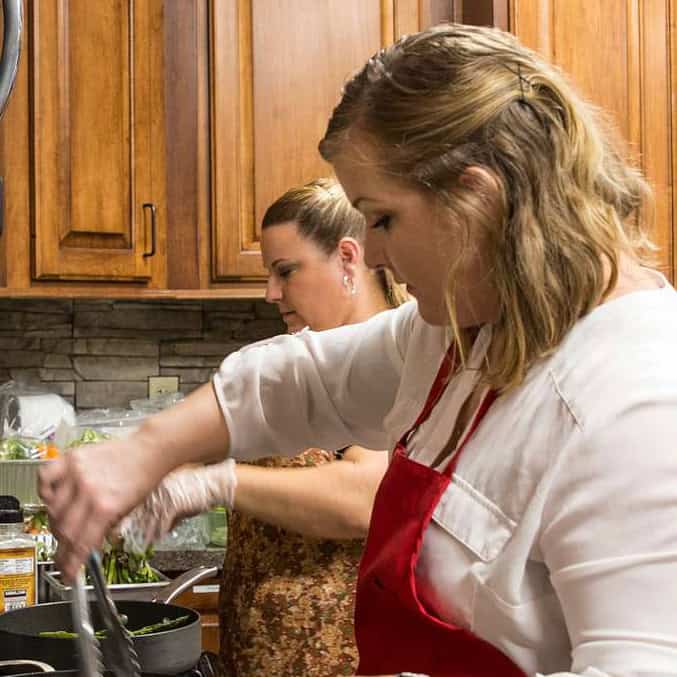Is meal planning worth it? No thanks, you may say. Who has time to sit down and start thinking about next Wednesday’s dinner? Then Wednesday night rolls around, the fridge is empty except for mustard and a few olives, and you can’t be bothered to run to the store at this hour. In a fit of hunger, maybe you pour yourself a bowl of cereal and call it “breakfast for dinner”. Or perhaps you grab some quick street tacos from the food truck down the street.
As those food trucks teach us, it costs more NOT to plan meals at home. Planning dinner ideas in advance saves money by fighting urges to eat out. A plan saves time by making grocery shopping more efficient and keeping food conveniently on hand. Most importantly, it helps make sure meals are balanced and nourishing — unlike that cereal for dinner.
Here’s some traditional step-by-step meal planning advice, passed down through generations and updated with fresh tips for less-traditional households.
1) Make a Calendar of Dinners for the Coming Week
Grandma’s technique: Use your favorite cookbook and input from the members of the household for ideas. To make the task easier, make weekly traditions like “Taco Tuesday” and “Pizza Friday”. Give yourself a break once or twice on the calendar with frozen entrees or a meal out. Be sure to leave a blank square toward the end of the week for reinventing leftovers and clearing the fridge.
21st century update: Meal ideas and inspiration can come from anywhere! Find a few good food bloggers to follow, look up your city’s top restaurant menus online, or check out Food Network’s YouTube channel. Also, don’t get stuck on a weekly calendar. If you tend to do your grocery shopping every few days, go with that. If you think long-term and buy in bulk, outline the entire next month’s worth of meals.
2) Write a Grocery List Based on Your Plan
Grandma’s technique: Write down your grocery list, organizing the page by sections of the grocery store to make things faster and more efficient once you get there. Start with your meal plan calendar, adding the items you’ll need for each recipe. Take inventory of what’s in your pantries and what you’ve recently run out of. Finally, get thrifty by clipping coupons from the Sunday newspaper and supermarket circular.
21st century update: Go digital! Paper and pens are losing ground to smartphone apps for calendars, to-do lists, and grocery lists. Look into a grocery shopping app that works for saving time and money. Often, they’ll have intelligent features like defaulting to a master list of groceries that you buy over and over again, and organizing the list according to the aisle-by-aisle layout of your supermarket of choice. What about getting thrifty with coupons? There’s an app for that too.
3) Go Grocery Shopping and Stick to the List
Grandma’s technique: Spend as little time as possible shopping for groceries. The longer you stay, the more money you spend on impulse buys. Oh, and never go to the supermarket hungry! You’re more likely to give in to instantly gratifying junk foods.
21st century update: Grandma is still as right as ever on this one. Grocery stores are known for arranging themselves in the least convenient way possible, maximizing the amount of products shoppers need to pass, stop in front of, and be tempted to buy. Move fast and stick to the list! Whether on an app or good ol’ paper, take that extra step and make sure your list is written down. Study after study shows that shoppers with actual lists (not just mental ones) spend less.
Listen to the age-old advice. Meal planning and organized shopping are still the best ways to save time and money (and to avoid unhealthy quick fixes). In our wireless world, there are more ways than ever to make meal planning work for you.

Hello, I am Cristy. I love cooking but what I love most is keeping my kitchen tools and appliances top notch. I enjoy writing about everything I have learned around the kitchen. I believe that keeping your kitchen tools well cleaned and maintained produces the best dishes and drinks. Besides writing and cooking I enjoy traveling, camping, hiking and music.
